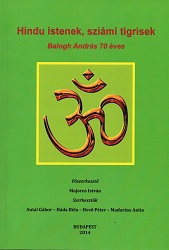
We kindly inform you that, as long as the subject affiliation of our 300.000+ articles is in progress, you might get unsufficient or no results on your third level or second level search. In this case, please broaden your search criteria.

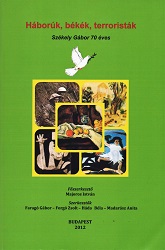
This book made for the seventieth birthday of Gábor Székely, Professor at the Eötvös Loránd University of Budapest, contains 51 studies. His colleagues wish him Happy Birthday.
More...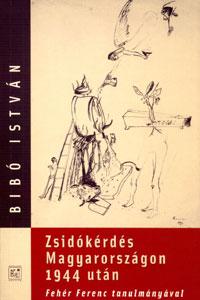


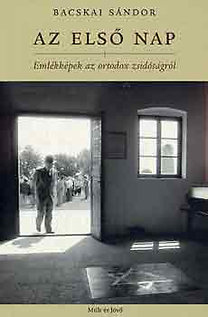
Sándor Bacskai´s „The First Day“ – as the first volume – begins with the golden age of the Jewish orthodoxy and ends in the time of returning from the forced labor camps, concentration camps.
More...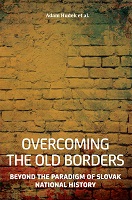
Jews were given a guarantee of equality by the Emancipation Act no. XVII/1867, which meant the same role for them like for all other citizens of Europe: to fulfil civil obligations and be loyal to the Hungarian statehood and the crown. They had to stop operating as a separate unit, that is, they had to suppress through reforms the cultural and ethnic particularities that distinguished them from the rest of the population and, consequently, to blend in with the majority, keeping their own religion at the most. Assimilation was intended as the consequence of emancipation and, in fact, its fulfilment. Such a liberal model, based on the Enlightenment ideals of the French Revolution, was in place everywhere in Western Europe. In the Hungarian intentions the assimilation had to take place toward the dominant ethnic Hungarian (Magyar) culture in order to strengthen its tenuous position within the boundaries of the historic Kingdom of Hungary, or, in other words, to increase at least statistically the number of ethnic Hungarians compared to other “nationalities”. In the beginning of the 20th century, Jews in Hungary amounted to about 6 % of the total population, which was a really high number compared with 1 % in Germany. The assimilation process in Hungary took place much faster than in Western Europe, or in less time, generally between the Compromise and World War I, and was most evident in the area of language. The difference was also in the fact that while the assimilation took place in the West in strong national cultures and modern economies, in Hungary it unrolled in generally less developed economic, cultural and political conditions.
More...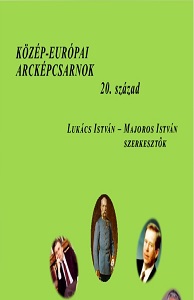
The unparalled military intervention on July 6, 1944 by Colonel Ferenc Koszorus and the Hungarian First Armored Division under his command foiled a coup-like action planned by State Secretary Laszlo Baky. Backed by thousands of gendarmerie, Baky was poisd to deport approximately 250,000 Jews, including refugees, living in Budapest to the Nazi German death camps. A few debate as to who should be deemed primarily res-ponsible for the so-called Koszorus „action”. Should it be the Regent Ad-miral Miklos Horthy, who ordered the First Armored Division into action, or Colonel Koszorús, who after volunteering his services and requesting an order to block Baky, successfully carried out the order. Nonetheless, it is beyond dispute that this casualty-free military operation in German oc-cupied Hungary resulted in the survival of thousands.The article written by Géza Gecse describes the tragic situation in oc-cupied Hungary in 1944. He also sheds light on incontrovertible facts de-monstrating that consistent with their duty of loyalty, there were patriotic and humanitarian Hungarian soldiers who were prepared to act at great danger to themselves even in this dark and perilous time.
More...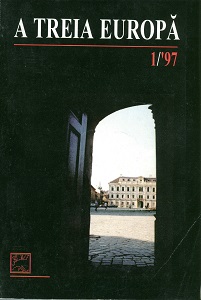
Mitteleuropa se naște sub semnul revizionismului. Se vor granițe noi, în numele unor criterii rasiale culminante la Auschwitz. De altfel, subliniază preopinenții lui Kundera (studiul său a stârnit nu doar aplauze furtunoase, ci și furtuni polemice), e corect să scriem că Mitteleuropa are, de fapt, două centre : Viena culturii și Auschwitz-ul asasinatului. Cei care privesc cu circumspecție termenul nu uită să evoce anii de formare ai lui Hitler, într-o Vienă antisemită. Mitul Vienei paradisiace este subminat de un altul, cel puțin la fel de viguros : acela al orașului infernal, aflat sub întreitul blestem al antisemitismului, al Casei imperiale degenerate și al kitsch-ului.
More...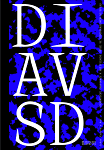
The publication serves as a support for secondary school teachers for the development of activation teaching in history.
More...
On October 12-13, 2021 in Jindřichův Hradec, the Jewish Museum in Prague, in collaboration with the Museum of Jindřichohradecko, hosted the eighth meeting of archivists, historians, Hebraists, and regional museum workers focused on Jewish history in the Czech Republic, particularly modern issues and border regions' history. Nineteen speakers discussed the historical development and legal status of Jewish religious communities from the 18th century to World War II, highlighting significant Jewish personalities. The seminar also covered the evaluation of archival sources on Jewish history preserved in Czech archives, with contributions on the Holocaust period, especially the fate of Jews from border areas, regional topics, and documentation of Jewish cemeteries. Additionally, a study based on NKVD documents was included. The authors are responsible for their studies' content, and the spelling of "žid" or "Žid" is left to their discretion.
More...
On October, the 24.-25. 2018, the Jewish Museum in Prague, in collaboration with the State Regional Archive in Třeboň, hosted the seventh meeting of archivists, historians, Hebraists, and regional museum workers focused on Jewish history in the Czech Republic, particularly modern issues and border regions' history. The event covered the organization and legal status of Jewish religious communities from the mid-19th century to World War II, the evaluation of archival sources on Jewish history preserved in Czech and foreign archives, and included studies on the Holocaust, especially the fate of Jews from border areas. Regional topics and documentation of Jewish cemeteries were also discussed, along with a contribution on Jewish sigillography. Not all presented contributions were included in the proceedings, but efforts were made to publish them in a planned eighth issue. The authors are responsible for their studies' content, and the spelling of "žid" or "Žid" is left to their discretion.
More...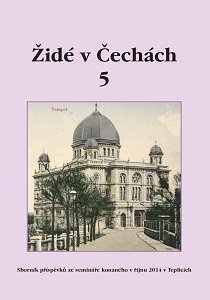
On October 1-2, 2014 in Teplice, the Jewish Museum in Prague, in collaboration with the Regional Museum in Teplice, hosted the fifth meeting of archivists, historians, and regional museum workers focused on Jewish history in the Czech Republic, particularly modern issues and border regions' history. The seminar emphasized analyzing sources that trace the fate of Jews from border areas after Nazi Germany's occupation, leading to the creation of databases documenting Jewish populations from the 1930s to the end of World War II. Contributions also covered the role of Jews in trade and business development, along with other regional topics. An evening program was dedicated to documenting immovable monuments. The next seminar was planned for autumn 2016 in Kadaň, with a focus on post-1945 Jewish history in the Czech Republic. The authors are responsible for their studies' content, and the spelling of "žid" or "Žid" is left to their discretion.
More...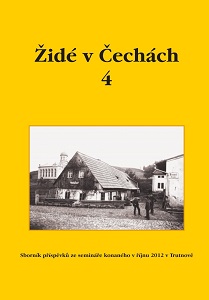
The document investigates the confiscation and handling of Jewish community assets in the occupied border regions during the Nazi era, focusing on the records from the Stillhaltekommissar für Organisationen Reichenberg and related institutions. It highlights the detailed financial records, including securities, real estate, and movable property, but notes the lack of information on the historical or artistic value of synagogue items, which were often melted down for their silver content. The study also examines the fate of Jewish community documents, such as financial books and membership records, which were often seized by the Gestapo. It discusses the administrative processes involved in the confiscation and the subsequent handling of these assets, including the involvement of various local and regional archives. The document underscores the challenges in tracing the history of these assets due to the destruction and dispersal of records during and after World War II. It concludes with reflections on the importance of preserving Jewish heritage and the ongoing efforts to document and understand the impact of these confiscations.
More...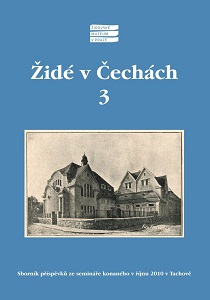
On October 6-7, 2010 in Tachov, the Jewish Museum in Prague, in collaboration with the Museum of Český Les in Tachov and the State District Archive in Tachov, hosted the third seminar on Jewish history in the Czech Republic, focusing on modern issues and the history of Jews in border regions. The seminar included discussions on archival sources for Jewish history, demographic records, and the role of Jews in industrial and business development. Topics also covered the Aryanization of Jewish property and post-World War II restitution issues. Not all contributions were included in the proceedings, but efforts were made to publish them in a planned fourth issue. The authors are responsible for their studies' content, and the spelling of "žid" or "Žid" is left to their discretion.
More...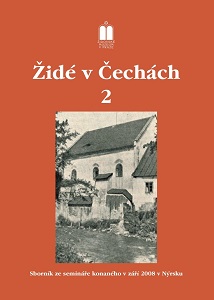
On September 24-25, 2008 in Nýrsko, the Museum of Královský hvozd in Nýrsko, in collaboration with the Jewish Museum in Prague, hosted the second seminar on Jewish history in Bohemia, focusing on modern issues and the history of Jews in border regions. The seminar included discussions on the stay of Galician refugees in Bohemia during World War I, the contribution of Jews to industrial business development, and Czech-German relations post-1945. Regional topics included the history of Jews in specific localities, activities inspired by the "Lost Neighbors" project, and the documentation of Jewish cemeteries. Not all contributions were included in the proceedings, but efforts were made to publish them in a planned third issue. The authors are responsible for their studies' content, and the spelling of "žid" or "Žid" is left to their discretion.
More...
On November 24-25, 2006 in Liberec, the North Bohemian Museum in Liberec, in collaboration with the Jewish Museum in Prague, hosted a seminar for researchers focused on Jewish history in Bohemia, particularly modern issues and border regions' history. This event aimed to establish a tradition of regular meetings, addressing the history of Jewish communities in areas occupied by Nazi Germany in October 1938 and the broader history of Jews in 20th-century Bohemia. Contributions included master's and doctoral theses, broader projects, and regional museum research, covering topics from World War I to the 1950s. The seminar highlighted the need for such gatherings and their focus on contemporary issues and border regions. The authors are responsible for their studies' content, and the spelling of "žid" or "Žid" is left to their discretion.
More...
Based on unpublished and published archival material of Yugoslav provenance, as well as available relevant literature, this paper analyzes the efforts of the Association of Yugoslav Jews in the USA to repeal two anti-Jewish decrees of the Kingdom of Yugoslavia from 1940, during a portion of World War II and the implementation of the Holocaust in the territory of the Kingdom of Yugoslavia (1942–1943). The main focus is placed on the activities of the Association of Yugoslav Jews in the USA aimed at influencing the Yugoslav government-in-exile to revoke the anti-Jewish decrees (1942–1943). Special attention is given to the questionable legal nature of the annulment of the anti-Jewish decrees carried out by the Ministerial Council of the Kingdom of Yugoslavia on June 2, 1943.
More...
This paper examines the testamentary work of Đorđe Lebović, the chronicle-novel "Semper idem". Referring to the author's earlier works, as a survivor of Nazi concentration camps, the paper outlines the similarities and differences in his approach to this unique thematic material. It explores issues of testimony, the need to write, the moments when this need arises, and the literary form the author adopts. Examples are highlighted through which the author identifies causal connections in events leading into the second half of the 20th century, as well as the significance of childhood during the formative years that overlapped with the rise of Nazism. By questioning the (in)capacity of literature in the face of the literary representation of the Holocaust, the paper situates the value of the novel, through a comparative overview, as a medium that supports the preservation of authentic stories from Holocaust victims.
More...
This paper places general recommendations for learning and teaching about the Holocaust, issued by leading global educational and research institutions, into the context of university-level Holocaust literature courses. By analyzing the experiences of university instructors along with significant didactic, pedagogical, and literary-theoretical studies, it presents the challenges and specific requirements of applying these general recommendations to the teaching of Holocaust literature. The focus is on three groups of recommendations that emphasize the importance of acquiring historical knowledge, precision in language use, and the emotional dimension of engaging with the Holocaust. These aspects are closely linked to the most challenging elements of Holocaust literature instruction: the relationship between history, historiography, and literature; the phenomenon of the Holocaust's "ineffability"; and emotional responses to reading Holocaust literature. These recommendations and their related challenges are critically analyzed in three separate chapters, with proposed solutions for teaching practice for each. The paper also includes a reflection on contemporary university teaching of Holocaust literature in Serbia and explores potential future developments.
More...